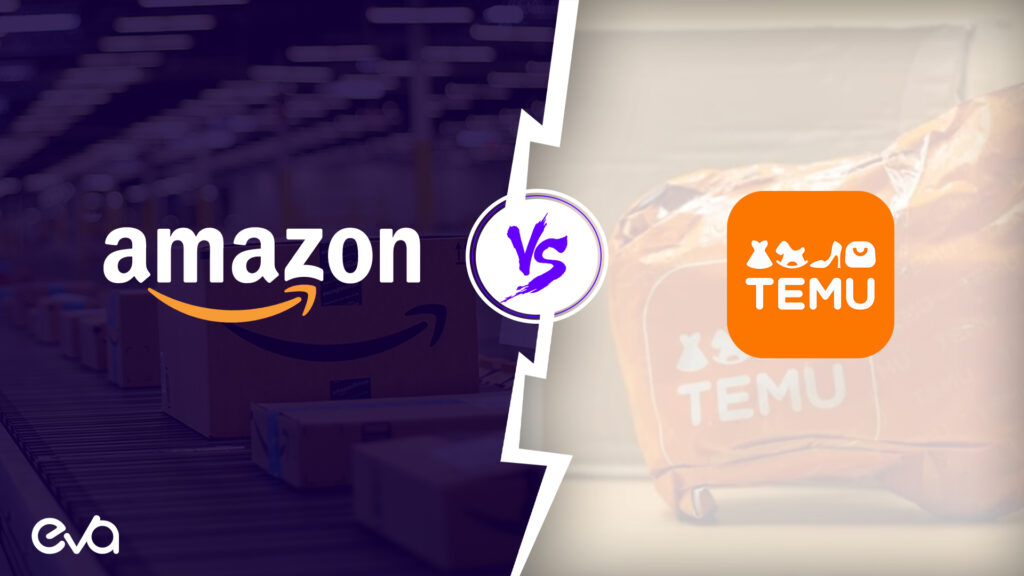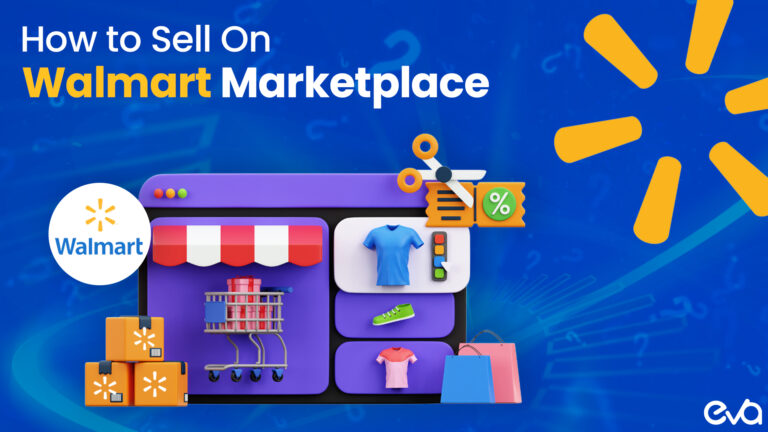Amazon recently dropped a bombshell on the eCommerce world: it’s diving headfirst into the low-cost unbranded goods market, directly competing with platforms like Temu.
This move has sent ripples through the third-party seller community, and many are wondering what this means for their businesses.
Table of Contents
- What Exactly Is Happening and What Are the Details?
- What is Amazon Haul?
- The Mobile-First Shopping Revolution
- Strategic Positioning Against Global Competition
- The Complete Shopping Experience Breakdown: How Amazon Haul Changes the Game
- Understanding the New Competitive Landscape
- The User Experience Evolution
- Strategic Implications for Sellers: Navigating the Multi-Platform Reality
- Adapting Your Strategy for the New Marketplace Dynamics
- Building Brand Resilience Across Platforms
- What is Temu?
- Would You Buy or Sell on Temu?
- Pros and Cons of Temu
- Temu vs. Amazon
- Is Temu Going to Steal My Amazon Customer Base?
- What are the Main Differences Between Temu’s and Amazon’s Business Models?
- The Role of Eva Commerce in Navigating These Changes
- FAQs
- Final Thoughts
What Exactly Is Happening and What Are the Details?
For the past two decades, Amazon has built its empire on the promise of speedy delivery. With 180 million Prime subscribers, it’s clear that fast shipping has been a winning strategy.
However, times are changing. Americans are now more concerned with saving money than getting products in two days.
Enter Temu and Shein, Chinese-owned platforms offering cheaper goods with longer delivery times, which have been steadily eroding Amazon’s market share.
Amazon’s response?
Launch Amazon Haul, a new store focusing on low-cost products shipped directly from China.
What is Amazon Haul?
Amazon Haul represents Amazon’s strategic counter-offensive in the ultra-low-cost shopping segment, launching as a mobile-exclusive marketplace designed to compete directly with platforms like Temu and Shein. Operating within the Amazon app ecosystem since its beta launch, Amazon Haul targets the growing segment of price-conscious shoppers willing to trade faster delivery for significant savings.
This dedicated shopping experience focuses exclusively on products priced under $20, with a sweet spot of items under $10 and even some as low as $5. Unlike traditional Amazon shopping that emphasizes premium brands and Amazon Prime’s lightning-fast fulfillment, Amazon Haul embraces a different value proposition: maximum affordability with acceptable delivery timelines of 1-2 weeks.
The Mobile-First Shopping Revolution
Amazon Haul’s mobile-only approach reflects a fundamental shift in how younger consumers discover and purchase products. The interface mimics the engaging, scroll-friendly design popularized by social commerce platforms, making impulse purchasing feel natural and entertaining. This represents a stark departure from Amazon’s traditional desktop-optimized experience, signaling the company’s recognition that budget shopping often happens spontaneously on mobile devices.
The platform’s product mix spans fashion, home goods, lifestyle accessories, and electronics – categories where brand loyalty often takes a backseat to value. Amazon backs these ultra-low prices with its established A-to-z Guarantee, providing the customer protection and return policies that many discount platforms lack. Items over $3 qualify for free returns, removing a significant barrier that typically accompanies budget online shopping.
Strategic Positioning Against Global Competition
Currently available to shoppers in the U.S. and U.K., Amazon Haul operates as a testing ground for Amazon’s ability to compete in price-sensitive markets traditionally dominated by overseas sellers. The platform leverages Amazon’s massive logistics infrastructure while adapting to longer delivery expectations, creating a hybrid model that combines Amazon’s reliability with the pricing aggressive enough to challenge Chinese marketplace platforms.
For sellers and brands, Amazon Haul represents both an opportunity and a challenge. While it opens new channels for reaching budget-conscious customers, it also signals Amazon’s willingness to prioritize volume and market share over traditional profit margins in specific categories. As the platform continues expanding beyond its current beta status, it’s reshaping how businesses approach product positioning and pricing strategies in the evolving e-commerce landscape.
The Complete Shopping Experience Breakdown: How Amazon Haul Changes the Game
Amazon’s launch of Amazon Haul represents a seismic shift in the temu vs amazon battlefield, directly targeting the ultra-low-cost segment that has made temu products so appealing to budget-conscious shoppers. This new initiative fundamentally alters the shopping experience for millions of customers who have grown accustomed to Amazon Prime’s promise of faster delivery.
Understanding the New Competitive Landscape
The introduction of Amazon Haul creates a fascinating dichotomy within Amazon’s ecosystem. While amazon prime members continue to enjoy expedited shipping and premium customer satisfaction through traditional FBA fulfillment, Amazon Haul operates more like a chinese marketplace with extended delivery times but competitive prices that rival what temu seller networks offer.
This strategic pivot acknowledges that not every online shopping session demands next-day delivery. Many shoppers are willing to accept standard shipping timelines of 9-11 days in exchange for substantially lower costs, similar to what they experience with the temu app. Amazon’s challenge lies in maintaining its reputation for quality products while competing in a price segment traditionally dominated by international shipping from overseas manufacturers.
The User Experience Evolution
Amazon’s approach differs significantly from pure discount platforms. While TikTok Shop and similar Chinese marketplace platforms often sacrifice user experience for lower prices, Amazon Haul leverages the existing Amazon Web Services infrastructure to provide a familiar interface with integrated payment options like Google Pay. This creates a more seamless shopping experience than many customers encounter when navigating standalone discount platforms.
For Amazon FBA sellers, this development presents both challenges and opportunities. Third party sellers who have built their businesses around higher price points and quality differentiation may find their products competing directly with Amazon’s curated low-cost alternatives. However, sellers who can adapt their strategies to include both premium and value offerings may capture a wider range of customer segments.
The emergence of Amazon Haul, combined with the continued growth of platforms like TikTok Shop, signals a fundamental shift in online retail expectations. Today’s successful sellers must understand how to position their brands across multiple shipping options and price points to maximize their reach across different customer segments.
Adapting Your Strategy for the New Marketplace Dynamics
Smart sellers recognize that the modern shopper isn’t loyal to a single platform – they’re loyal to value. A customer might purchase everyday items through Amazon Haul for the lowest prices, use Amazon Prime for urgent needs requiring faster delivery, and explore specialized platforms for unique products. This behavior pattern requires sellers to think strategically about their multichannel approach.
Amazon Prime members represent a particularly valuable segment because they’ve already demonstrated willingness to pay for convenience and speed. These shoppers often prioritize customer satisfaction and are willing to accept a higher price for quality products and reliable service. However, the same prime members might use Amazon Haul for non-urgent purchases where price trumps speed.
Building Brand Resilience Across Platforms
The key to thriving in this environment lies in understanding platform-specific customer expectations. While Temu vs Amazon price comparisons will inevitably favor the lowest-cost option, successful sellers focus on creating value that transcends pure price competition. This might include superior packaging, enhanced customer service, or product bundles that justify premium positioning.
For sellers considering expansion beyond Amazon, platforms like TikTok Shop offer opportunities to reach younger demographics through social commerce, while maintaining a presence on traditional marketplaces ensures access to established customer bases. The most successful sellers create ecosystem strategies that leverage each platform’s unique strengths rather than treating them as isolated sales channels.
International shipping considerations also play a crucial role in platform selection. While some sellers can compete directly with overseas manufacturers on price, others find success by emphasizing local fulfillment advantages, such as easier returns, faster customer service response times, and reduced shipping complications.
Understanding these nuances helps sellers position their offerings appropriately across different marketplace environments while maintaining profitability and growth.
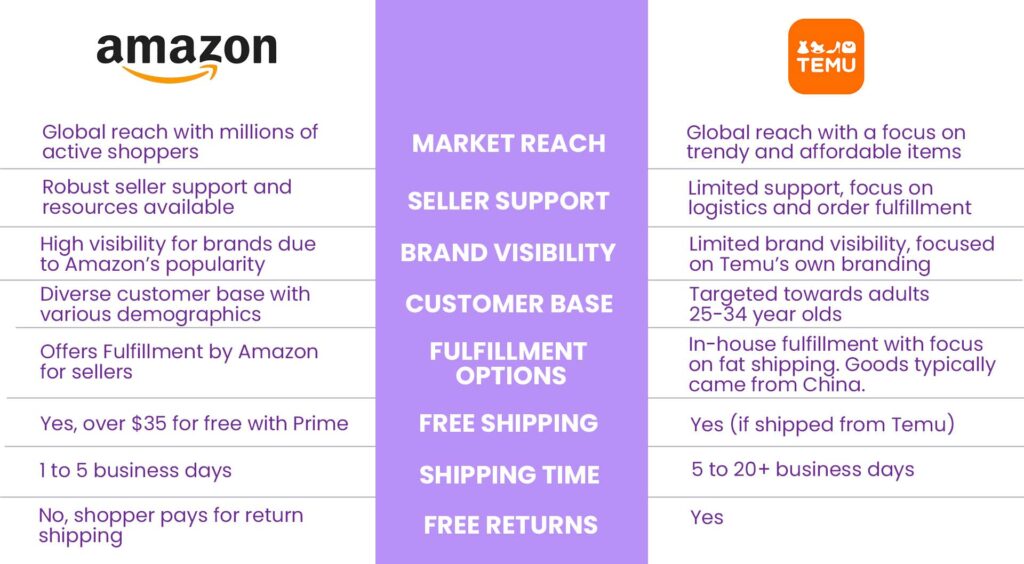
What is Temu?
Temu is a Chinese-owned eCommerce platform that has rapidly gained traction in the U.S. market by offering ultra-low-cost products.
Temu eliminates the middleman by shipping goods directly from Chinese manufacturers to consumers, allowing for significantly lower prices compared to traditional retailers like Amazon.
Targeting price-conscious consumers willing to wait longer for deliveries, Temu became the most downloaded eCommerce app in 2023, even surpassing Amazon.
Would You Buy or Sell on Temu?
Buying on Temu offers the advantage of ultra-low prices for a wide range of products.
Consumers can find everything from household items to electronics at a fraction of the cost found on other platforms.
However, buyers should be prepared for longer shipping times and potentially lower product quality.
Selling on Temu can be appealing due to the platform’s growing popularity and vast consumer base.
However, sellers must compete with low-cost Chinese manufacturers, making it challenging to maintain profit margins.
Additionally, the platform’s focus on ultra-low prices may not align with sellers offering higher-end products.
Pros and Cons of Temu
Pros:
- Ultra-low prices
- Wide range of products
- Direct shipping from manufacturers
Cons:
- Longer shipping times
- Potentially lower product quality
- Intense competition for sellers
Temu vs. Amazon
Temu vs. Amazon Prices
Temu’s prices are often significantly lower than Amazon’s due to direct shipping from Chinese manufacturers and the “de minimis” rule, which allows products valued under $800 to enter the U.S. without import duties.
This gives Temu a substantial price advantage over Amazon, which faces various fees and tariffs.
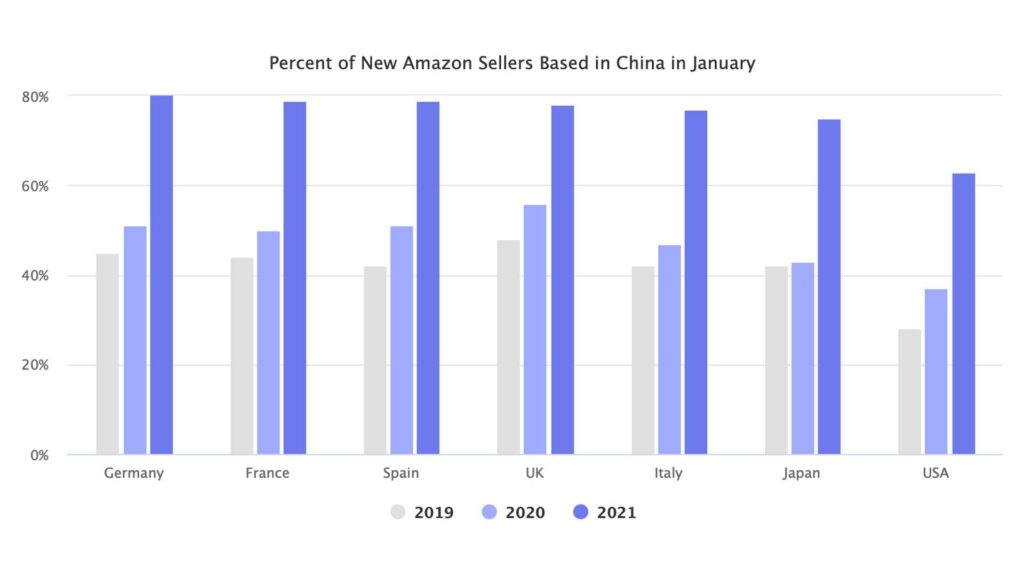
Temu Sales vs. Amazon
While Temu has rapidly gained market share, Amazon remains the dominant player in the eCommerce space with a well-established customer base and a vast product selection.
Temu’s sales are growing, particularly among price-conscious consumers, but Amazon’s extensive logistics network and Prime benefits keep it ahead in overall sales.
Temu vs. Amazon Quality
Amazon is known for its reliable delivery times and customer service, ensuring a consistent quality of experience.
In contrast, Temu’s focus on low prices can sometimes result in lower product quality and longer shipping times.
Consumers on Temu should carefully read product reviews and manage their expectations regarding delivery times.
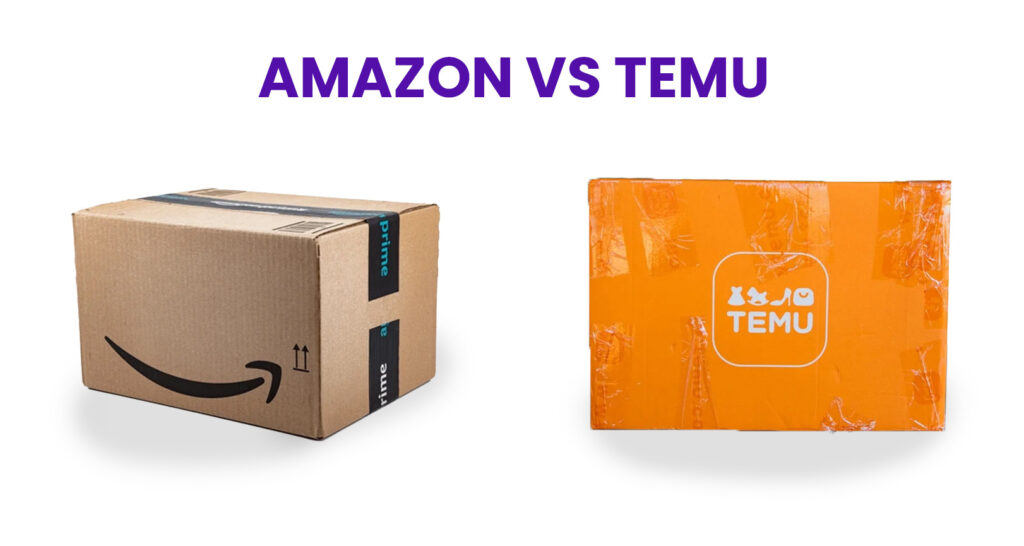
Temu vs. Amazon Ethics
Amazon has faced scrutiny over its labor practices, environmental impact, and market dominance.
Similarly, Temu’s reliance on ultra-low-cost manufacturing raises concerns about labor conditions and product quality.
Both companies are subject to ethical considerations, and consumers may choose based on their values and priorities.
Temu vs. Amazon Market Share
Amazon holds a significant share of the global eCommerce market, supported by its robust infrastructure and Prime membership benefits.
Temu, while growing, remains a smaller player but has shown impressive growth in markets focused on cost-saving. The competition between the two reflects broader shifts in consumer priorities.
Is Temu Going to Steal My Amazon Customer Base?
Temu’s low prices and growing popularity can attract price-conscious consumers, potentially drawing them away from Amazon.
However, Amazon’s extensive product range, reliable delivery, and customer service maintain a loyal customer base.
To mitigate this risk, Amazon sellers should focus on quality, unique products, and exceptional customer experiences.
What are the Main Differences Between Temu’s and Amazon’s Business Models?
- Product Sourcing: Temu sources products directly from Chinese manufacturers, allowing for lower prices. Amazon hosts a mix of third-party sellers and its own inventory.
- Pricing Strategy: Temu focuses on ultra-low-cost products, while Amazon offers a wider range of price points.
- Shipping: Temu has longer shipping times due to direct shipping from China, whereas Amazon emphasizes fast delivery, particularly through Prime.
- Customer Base: Temu targets price-sensitive consumers, while Amazon appeals to a broader audience with varied priorities, including fast shipping and customer service.
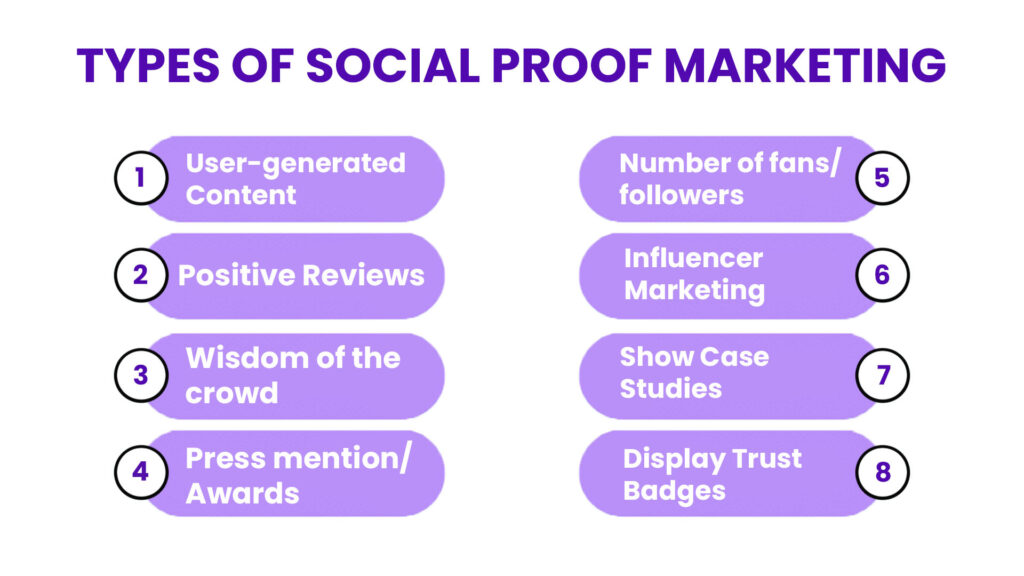
How Eva Can Help
Eva Commerce is your strategic partner in this challenging environment. Our advanced AI platform helps brands optimize their advertising strategies across multiple marketplaces, including Amazon and Walmart.
By integrating inventory levels, conversion rates, and profitability metrics, Eva ensures that every advertising dollar is well-spent.
Eva’s AI platform is context-aware, meaning it considers factors like inventory levels and profitability across all marketplaces.
This holistic approach helps brands make data-driven decisions that maximize efficiency and ROI.
Our experts analyze the data to determine the best actions for your advertising campaigns, ensuring you get the most out of your marketing budget.
As an Amazon Advanced Partner and Walmart Strategic Solution Partner, Eva also collaborates with platforms like TikTok, eBay, Shopify, Google, Meta, Wayfair, and Faire.
Our focus on profitability helps brands achieve sustainable growth and invest in the most effective multimedia mix for their marketing efforts.
Ready to take your Amazon business to the next level? Book a free consultation with Eva Commerce.
FAQs
The “de minimis” rule allows products valued under $800 to enter the U.S. without import duties, giving Chinese sellers a price advantage.
Focus on niche markets, quality, and branding. Consider offering personalized or high-end products that are harder to replicate.
Avoid generic, low-cost items that can be easily sourced from China at lower prices. Instead, focus on unique or customizable products.
Eva’s AI platform optimizes your advertising strategies and integrates key metrics to ensure maximum ROI, helping you stay competitive.
Yes, diversifying your sales channels can mitigate risk and reach a broader audience. Consider platforms like Walmart, Shopify, and eBay.
The new store will likely make it harder for third-party sellers to compete on price, especially for low-cost, generic items.
Yes, but you’ll need to adapt by focusing on unique products, building a strong brand, and leveraging platforms like Eva Commerce for optimization.
Branding helps differentiate your products, build customer loyalty, and justify higher prices through perceived value and quality.
Use social media, email marketing, and content creation to engage with your audience and create a strong online presence.
Eva’s platform integrates inventory, conversion rates, and profitability metrics across multiple marketplaces, helping you make data-driven decisions for optimal advertising strategies.
Final Thoughts
The landscape of eCommerce is ever-evolving, and Amazon’s latest move is a testament to that. While this new development poses challenges for third-party sellers, it’s not the end of the road.
By focusing on quality, personalization, and branding, and leveraging the power of platforms like Eva Commerce, you can not only survive but thrive in this competitive market.
For more insights on how to navigate the eCommerce landscape, check out our blog on the importance of brand building in eCommerce.
Remember, the key to success in eCommerce is adaptability. Stay informed, stay flexible, and keep innovating.

